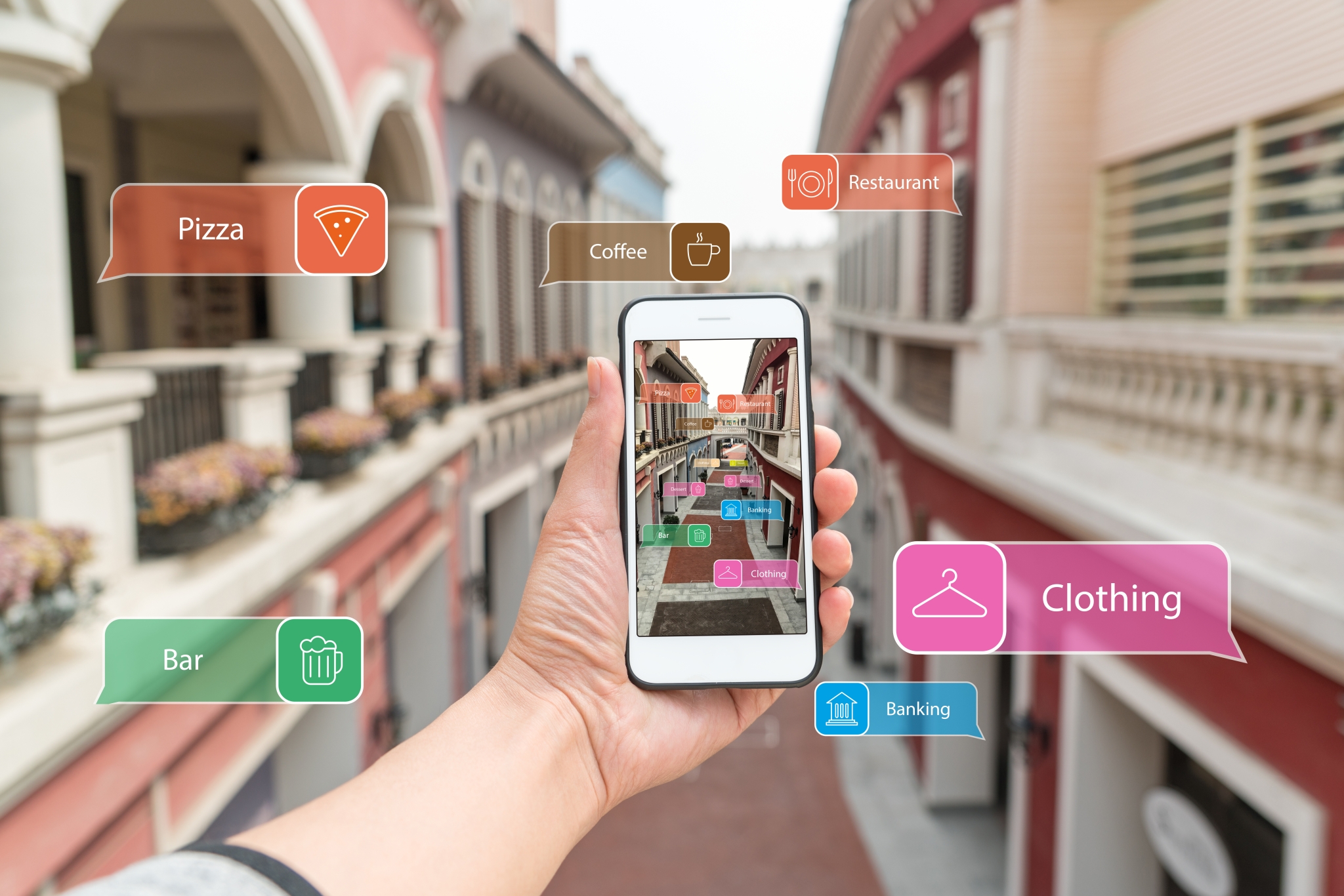How Augmented Reality Can Help eCommerce Growth

Finding a mechanism for customers to interact with things before purchasing is one of the most difficult difficulties that e-commerce merchants have faced. Customers may abandon their carts due to the fact that most individuals want to try out products before making a purchase choice. However, through augmented reality, technical improvements have made a significant contribution to solving this problem (AR).
Simply described, augmented reality is a technology that places virtual things in real-time in the actual world to create a digital interface in the environment surrounding a person. To put it another way, augmented reality (AR) allows buyers to test virtual products in their real-life environment using computer-generated visuals on a screen to assess how well they fit into their lifestyles.
In eCommerce, augmented reality is clever, exciting, and practical, and it's the future that will never go away, only grow. Due to the practically real-life qualities of mobile e-commerce applications, eCommerce has become a benefit to the human population due to the tendency and want to purchase goods in your own comfort zone and reduce the inconvenience of visiting and exploring products.
According to a study, by 2024, 95% of all purchases would be made online. As a result, Augmented Reality in eCommerce app development has a huge potential to move your business forward and increase sales. People are very excited to see Augmented Reality in eCommerce and even want it to be a part of every niche due to the technical digitization of enterprises.
In a variety of businesses, augmented reality is really starting to take off. Let's look at some numbers to back that up:
- More than 83 million individuals in the United States will use augmented reality on some form of gadget at least once a month, according to eMarketer, with that number expected to climb to 95.1 million by 2022.
- Advertising income might reach $8 billion by the end of 2024, according to one AR research organization.
- Global AR advertising revenue climbed to $1.41 billion in 2020, up from half a billion dollars in 2019.
Also Read: How Can Auto-fulfillment Help Your Business Become More Efficient
What e-commerce companies are doing with augmented reality
Before making a purchase, AR allows eCommerce shoppers to sample products or experience services in their own environment and on their own schedule. Customers can preview products using augmented reality, making them more likely to buy the proper product the first time. Here are some of the best features of a mobile e-commerce app that can help you increase your sales.
-
Solutions for virtual try-on
-
Get a real-time look at your placement by previewing it.
-
User manuals that are interactive
-
Catalogs that have been digitized
-
Filters for social media
-
Experience that is unique and personalized
Brands that have effectively implemented augmented reality in their online stores
So, how can you integrate augmented reality into your online store? And what aspects of mobile e-commerce apps can you make money from? Will the brand's eCommerce app development prove profitable and scalable? These brands have effectively accomplished all of this in a variety of ways.
-
Ikea employs augmented reality to let people shop for furniture at home.
-
Dulux Paint employs augmented reality to demonstrate paint hues on a customer's wall.
-
Interactive games are layered upon genuine toys by Lego Hidden Side and Bic Kids.
-
The Wannaby and Warby Parker applications allow customers to try on clothes at home.
Large manufacturing companies all over the world have already begun to adopt the technology. Their initial investments are paying off in spades, allowing them to surpass their competition by offering more engaging, connected, and visual sales experiences. Demand will rise in tandem with this trend. As a result, the next significant software categories will be focused on how new AR technologies are applied to certain domains.

Also Read : Why You Should Start eCommerce For Your Business This 2021?
Types of AR
The use of augmented reality in eCommerce app development is getting increasingly profitable, and it is becoming increasingly important to keep ahead of the competition.
-
Location-based AR — A type of markerless AR that leverages a user's location to display digital content in specific locales, such as Pokemon Go.
-
Outlining AR — It simply draws a line around the object. If you're parking your car in the dark, for example, these AR outlines will illuminate the road lines so you can see them.
-
AR based on superimposition — It replaces an object or a portion of an object with an Augmented digital element. On the screen of your smartphone, the user can select the part to be augmented.
-
AR based on projection — This type of AR projects virtual 3D pictures of a product onto a real object, space, or surface.
-
Recognize an object in front of the camera and deliver relevant information about it using recognition-based AR.
-
AR that isn't activated by a specific object in the actual world is known as markerless AR. Instead, the user can drag and drop a virtual object anywhere they want it. The object can then be rotated and moved.
Conclusion
Because of the advanced features of mobile e-commerce applications, augmented reality may give a "Wow" effect to anything. Technology is infiltrating huge brands in order to keep them ahead of the competition, which is why it has become important for all types of organizations to adapt in order to stay competitive.
In eCommerce, augmented reality is also a fantastic approach to outperform the competition. If you want to stand out, your eCommerce firm should master a few tactics that include the use of augmented reality (AR) to improve engagement with both old and new clients.
Because it's so difficult to predict how things will seem in real life versus on a computer or smartphone screen, some product categories can be difficult to sell on eCommerce sites. That is why, especially with the advent of social separation, augmented reality applications have become increasingly popular.
If you want to understand more about eCommerce app development, engage a skilled and dedicated team with the knowledge and experience to help you build your business using disruptive technologies.
Related Posts
Mon, Apr 20, 2020 11:13 PM
Business Internet Guides for Entrepreneurs
Small businesses need to grow, but how big should your business become before you buy it online? Whether you started out as a sideshow or a brick-and-mortar business, successful small businesses are finding it increasingly difficult to decide when to shell out money for an Internet business.
Wed, Apr 22, 2020 11:34 PM
Find Verizon Internet for Business Near You!
Verizon provides Internet for business in more than 40 states in the US, speeds are limited to 15 Mbps, and many businesses will need more juice. If you're in the Northeast, you can enjoy high-speed Internet via Verizon's FiOS. This is ideal for businesses that need high speeds, such as restaurants, hotels, medical facilities, hospitals, schools, and other businesses.
Thu, Apr 23, 2020 12:00 AM
5 Best Small Business Internet Service Providers (2021)
The following Internet Service Providers are not listed in any particular order, but we have ranked these five companies as worthwhile due to some key factors such as speed, reliability, cost, and overall customer satisfaction.
Thu, Apr 23, 2020 11:52 PM
Why Business Internet is More Expensive Than Residential Internet
This question is asked so often today that it seems worth explaining, but here are 5 reasons why business Internet is more expensive than Residential Internet packages.
Fri, Apr 24, 2020 5:17 AM
Comcast Internet For Business: Internet, Phone, TV, and Other Solutions for your Business.
Comcast Business is US largest cable provider for small and medium-sized businesses and has become a force in the market, recognized by leading industry over the past two years as one of the fastest-growing providers of high-speed broadband to business customers




